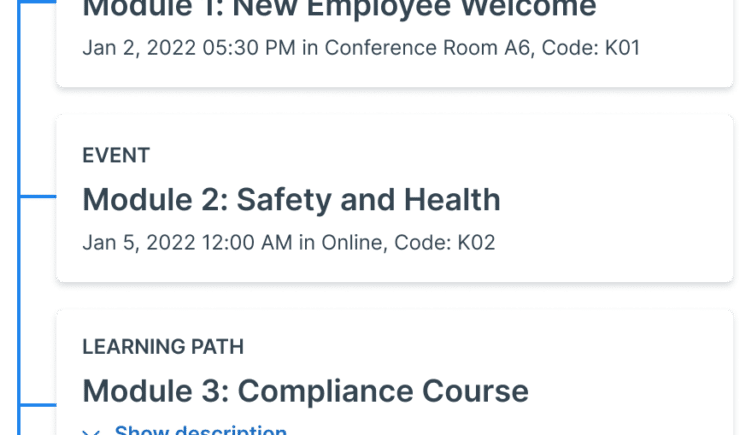When people hear the phrase “expect the unexpected”, they tend to have two very different understandings. Some people have a natural urge to try to literally expect unexpected events. These over-thinkers try to prepare for an uncertain future by thinking through every possible scenario and how they would respond.
Overthinking the future is rarely as productive as it feels. It’s just not possible to anticipate everything that could happen and plan ahead for it.
The much more productive interpretation of “expect the unexpected” is to prepare yourself to deal with something completely unanticipated. Planning ahead is, of course, important. But you should expect that things probably won’t go according to plan. This understanding of “expect the unexpected” is all about being prepared to respond effectively to a completely unknown challenge.
The key to responding to unanticipated events is maintaining a sufficient margin of available resources and effort. There can be no sustainable response to change if maintaining daily operations already requires 100% of your team’s effort.
Building up that margin, and the personal adaptability to use it, is what it means to be agile.
Agility is something that business leaders in every industry are increasingly interested in developing. The Training team can and should be on the front lines of that push. Let’s talk about how Training can position itself to be a leader in developing agility – and how training software might be be holding it back.
How Training Operations Create Business-Wide Agility
Creating agility may or may not be a stated goal of your Training team. But fundamentally, businesses expect Training to provide them with the agility to respond when their operations need to change. And for training operations to expand alongside business operations, a robust capacity to adapt to changing conditions is required.
Training can and should set out to create a culture of agility within the organization. Training operations – especially the onboarding process – can be an excellent time to instill a company-wide value of being agile. Explicitly training employees to respond to unexpected events involves building capacities and confidence throughout the workforce.
- Encouraging free, open, and continuous communication can help employees share information and quickly spread effective responses and strategies through the organization.
- Increasing employee confidence in facing the unknown through training exercises can prepare them to take the initiative in unexpected circumstances.
- Promoting healthy stress management practices is crucial to guiding employees through the naturally stressful process of adapting to change.
These are all ways that Training can proactively encourage an organizational culture that creates agile and resilient employees.
However, Training also needs to be prepared to produce a response to specific, sometimes major events. The rapid, worldwide shift to eLearning content and vILT in 2020 is an extreme example. But even much more minor events can create a need for an adaptive and rapid response.
Training must be one of the most agile teams in the organization. How else can it develop a training strategy that prepares the rest of the business for adapting to change? The Training team is responsible for ensuring that employees are prepared to perform in their roles. That also means the responsibility to ensure employees are prepared for changes in their roles.
Often, however, Training teams are prevented from achieving that level of agile performance. Let’s discuss how software often holds Training teams back.
How Outdated Learning Tech Prevents Agility in Enterprise Training
A culture of agility is a difficult thing to develop and maintain. Getting organizational buy-in, developing best practices, and gaining experience in responding to the unexpected, can take years. Improving your training management software is only one step.
However, you can think of the software you’re using as being infrastructure, like a road network. A bad road network might make it difficult or impossible to get where you need to go, or could even damage your car. A good road network gives you the freedom to drive where you want – but you still need to know how to get there.
Enterprise training software has historically focused on delivering training to the learner. That focus is important, but it has left training management to fall increasingly further behind. Most Training teams are stuck using software for training management that provides the basics, but doesn’t leave much margin for flexibility. At every step of the way, typical training software puts up obstacles to agility.
Common Obstacles to Agility From Poor Training Management Software
- Inflexible and incomplete reporting architecture is almost universal. Many training software systems only offer pre-written reports that can’t be modified or redesigned. This often leaves Training teams struggling to isolate and utilize the data they need in an unusual circumstance.
- The lack of integrations and connectivity in point-solution software is also problematic. Most single-solution training software does not interface with other business systems. This leads to Training teams spending their time manually coordinating across their tech stack with spreadsheets. That’s time that isn’t spent engaging with the data to drive strategy.
- Training professionals are unable to get a holistic view of training operations when data is spread across incompatible systems. Data describing one training modality might be on one system while instructor databases and learner contact information might be on another. If data can’t be easily aggregated and assessed in one place, employees will struggle to develop a meaningful understand of training operations.
The result? Wasted time, wasted effort, and wasted budget, all spent maintaining training management software that only meets the bare minimum. Those are resources that Training teams desperately need to reclaim in order to build up the margin needed for agile operations.
Adding more systems, more complexity, in an attempt to solve the problem, only compounds the issue. Breaking down barriers to agility requires a fundamental change in the software being used. Software that can provide infrastructure support, coordinating and streamlining the flow of data and tasks throughout the training function, is key.
Enable Agile Operations with a Training Management Platform
A training management platform like Administrate combines the features of single-solution training software into a single, streamlined software infrastructure for training management. Administrate connects and coordinates all aspects of the training function, from delivery to management to strategy. This creates a working environment for Training teams that is as seamless and empowering as possible.
No more hunting down and manually transferring training data from system to system. Data from training operations can be automatically reported through the fully customizable no-code reporting engine within Administrate.
Administrate’s focus on connectivity, including an open and transparent API designed for an enhanced developer experience, enables the software to integrate into any business system. This can even include systems from outside the training function. This connectivity enables Training to easily pull data from across the organization to inform its strategy.
And with all of your data compiled into the same platform, gaining insight into operations becomes easy. That data-driven knowledge can be key to determining Training’s responses to changing circumstances.
This increased efficiency enables you to recover resources – time, money, effort – that previously were needed just to maintain existing operations. By reclaiming these resources, a training management platform builds in the margin needed to develop a learning and development strategy in response to change.
Streamlining the learning technology ecosystem is an important step for increasing the scalability of your operations. Of course, that is far from the only improvement most teams could make. Take our short scalability assessment, and receive a personalized set of recommendations on how your team can remove barriers to scaling your operations.





